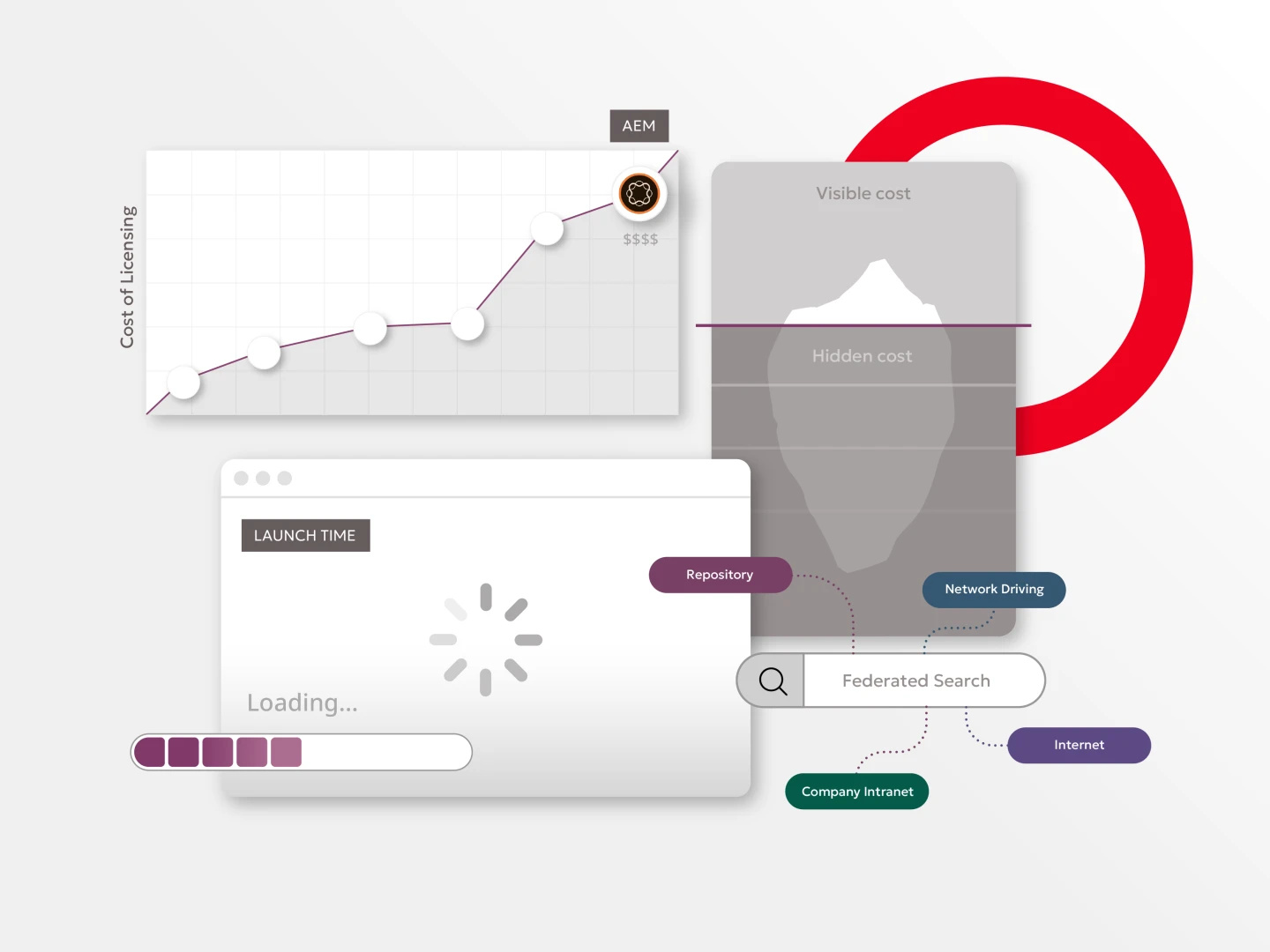Adobe AEM licensing costs can be high
The licensing fees for Adobe AEM vary by business needs and which options are implemented, but in general, costs average $250,000 to $1,000,000+ annually. In a review of content management systems, Gartner noted: “Adobe’s WCM offering is one of the more expensive in the market, sometimes being twice the price of its nearest competitor.”
Why Brightspot is the best Adobe AEM alternative when it comes to cost
Brightspot’s CMS is, on average, half the price of Adobe Experience Manager. What’s more, you can reduce maintenance costs by managing your content yourself. Because Brightspot is designed with end users in mind, editorial teams can start publishing their own content on the same day.
Time to launch can be slow with Adobe AEM
If you’re working with Adobe AEM, you can expect a 9-to-18-month rollout and implementation timeline. Compare this to Brightspot, where teams can go from idea to launch in a matter of weeks and with access to best-in-class publishing features and in-built collaborative tools like notifications and custom workflows. Standing up microsites and landing pages can be done in a matter of hours.
Adobe AEM deliverables often involve hidden costs
One of the most common Adobe AEM performance issues is that many of the essential tasks demoed by Adobe’s sales teams are not achievable solely with Adobe Experience Manager. Companies often find that to meet their business objectives they must also license Adobe Analytics, Adobe Tag Manager and other Adobe products to supplement their AEM implementation, significantly increasing licensing fees.
Why Brightspot is the best Adobe AEM alternative when it comes to launch implementations
With Brightspot’s CMS, there are no hidden costs. We deliver on-time and on-budget. Every Brightspot launch involves a true partnership between our team and our customer. Our out-of-box CMS implementation options include in-CMS analytics and a broad portfolio of API integrations. We believe these are essential to your success, not extras you should pay more for later.
Heavy involvement from developers can be a burden with Adobe AEM
First and foremost, your developers can expect a complicated installation and setup for Adobe AEM. They will be required to build everything — from text boxes and templates to submit buttons and edit screens for users. Simply put, it is not a product that you can deploy and then hand over to your editorial team.
A huge challenge of the Adobe AEM platform is that it can be hard to grasp for those without advanced HTML skills. Because the system is not designed for editors, additional costs and time required for training should be factored in or the responsibility of creating, developing and managing the system will fall primarily in the hands of your IT team.
We want to empower your teams to do the things they do best, so Brightspot was designed to fit into your publishing process, freeing publishers to quickly distribute content to every channel without the need for IT. In turn, your development team gets to focus its priorities, while content producers get to create.
Adobe AEM’s rigid architecture can be cumbersome
A key reason Brightspot is preferred by editorial teams is our content discoverability. With our clean, folderless infrastructure, powerful federated search and customizable dashboard, editors can move quickly and avoid time wasted in tracking down content. Adobe AEM’s folder structure and basic search functionality can be challenging to navigate and require more clicks and time than they should.
Adobe AEM does not offer federated search out-of-the-box and their basic search functionality is not powerful enough to parse large amounts of data and return relevant results. Unless you know exactly where you saved something, searching for a particular item is time-consuming.
Measurement isn’t included out-of-the-box with Adobe AEM
In today’s growth culture, publishers rely on metrics to remain competitive and make informed decisions. But with Adobe Experience Manager, analytics features aren’t available out-of-the box.
Why Brightspot is the best Adobe AEM alternative when it comes to analytics
Brightspot features out-of-the-box analytics, which means you won’t need IT or development support in order to get basic analytics on your site. It’s worth noting that Brightspot has integrations with analytics providers such as Google Analytics and Parse.ly as well as Adobe Analytics. We believe in working within whatever ecosystem you’re accustomed to; so, if you have an analytics system in place that you would like to continue using, there’s a good chance we have an out-of-the-box integration for it or can explore an integration with it.













